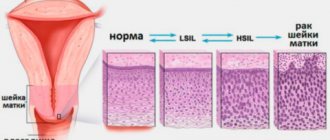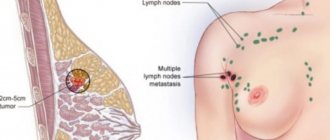Stomach cancer is one of the most common cancer diseases. Actively developing, it can affect all organs of the gastrointestinal tract and more. The esophagus, intestines, lungs and liver are most susceptible to metastases. At the time of 2008, about 800 thousand people per year died from this disease in the world.
Our expert in this field:
Ibragimov Elkhan Kamranovich
Oncologist, chemotherapist, head of the oncology department
Call the doctor
If stomach cancer is diagnosed, treatment cannot be delayed. The tumor progresses and grows into neighboring tissues. Loss of time leads to a worsening prognosis of treatment. The fight against the disease must begin immediately after its detection. At the Medicine 24/7 clinic you can quickly receive all the necessary types of treatment. You can contact our doctors 24 hours a day, 7 days a week. They work in accordance with the latest versions of international protocols and will be able to help you.
Stomach cancer was first successfully operated on by the Austrian Billroth at the end of the 18th century. Over the past century and a half, therapeutic approaches to most malignant neoplasms have changed, many antitumor drugs have appeared, but only surgery provides hope for curing stomach cancer.
Causes of stomach cancer
The exact causes of stomach cancer are unknown. DNA mutations occur in the mucous membrane of the organ, resulting in “wrong” cells that can acquire the ability to grow uncontrollably. Why this happens is not entirely clear. But risk factors are well studied - conditions that increase the risk of stomach cancer.
Heredity and stomach cancer
Some people carry a “time bomb” hidden in their genes. Sometimes not even one. This is confirmed by some facts:
- If a close relative (parents, siblings, children) of a person is diagnosed with stomach cancer, the risk is increased by about 20%.
- Men get sick more often than women. It is difficult to say what exactly this is connected with, but it can be assumed that a difference between male and female genes is involved.
- Japanese who migrated to the United States suffer from stomach cancer less often than their compatriots, but more often than “native” Americans. This suggests that the matter is not only in the nature of nutrition, but also in heredity. The main suspect is a gene called RNF43.
- Carcinoma, the most common type of stomach cancer, is more common in people with blood type A (II), which they, of course, received along with their genes.
- The risks are increased in some hereditary diseases: pernicious anemia (3-6 times), hypogammaglobulinemia, non-polyposis colon cancer.
- The incidence of stomach cancer increases after age 70, thought to be due to the accumulation of unwanted mutations in body cells as we age.
Stomach cancer and diet
The role of nutrition in the occurrence of malignant tumors of the stomach has been well studied. Risks are increased by large amounts of salt, starch, nitrates, and some carbohydrates. People who eat a lot of salted, smoked, pickled foods and few vegetables and fruits get sick more often.
Stomach cancer and bad habits
Smoking approximately doubles the risk of stomach cancer. Scientists in the UK believe that approximately every fifth case is related to smoking. When a person inhales tobacco smoke, part of it enters the stomach, and the harmful substances it contains damage the cells of the mucous membrane. The higher the smoking experience and the number of cigarettes daily, the higher the risks. Alcohol is also on the list of suspects, but there is no direct evidence yet.
Helicobacter pylori (H. Pylori) and stomach cancer
H. Pylori is a bacterium that can cause peptic ulcers and chronic atrophic gastritis. It is currently considered an important factor in the development of gastric cancer. With Helicobacter pylori infection, the likelihood of a malignant tumor in the stomach increases 4 times. This pathogen is found in half of the removed tumors.
Other risk factors
- Peptic ulcer disease. Research data on this matter is contradictory. If the ulcer is located in the body of the stomach, the risk of cancer increases almost 2 times. With a lower ulcer, the risks do not appear to be increased.
- Adenomatous polyps of the mucous membrane.
- Familial adenomatous polyposis is a disease caused by a mutation in the APC gene and leads to the appearance of many polyps in the stomach and intestines. This slightly increases the risk of cancer.
- Gastric surgery increases the risk of cancer by 2.5 times. This is due to the fact that the stomach produces less hydrochloric acid, and bacteria that produce nitrites multiply more actively in it, and bile backflows from the small intestine. Typically, malignant tumors appear 10-15 years after surgery.
- Social and financial situation: the risk increases with low income, living in an overcrowded apartment, without amenities, in an unfavorable area.
- Other oncological diseases: cancer of the esophagus, prostate, bladder, mammary glands, ovaries, testicles.
- Menetrier's disease (hypertrophic gastropathy) is characterized by the growth of the gastric mucosa, the appearance of folds in it and a decrease in the production of hydrochloric acid. The pathology is rare, so it is unknown how often it leads to stomach cancer.
- Workers in the coal, metallurgical and rubber industries are at increased risk.
- Immunodeficiency increases the likelihood of developing cancer and gastric lymphoma.
Classification of stomach cancer: what is it like?
Malignant tumors of the stomach, according to the WHO International Histological Classification, are divided into 11 types, depending on which cells they originate from. The predominant cancer is from glandular cells that line the mucous membrane and produce mucus - adenocarcinoma. It accounts for 90-95% of all cases. There are also tumors from immune (lymphoma), hormone-producing (carcinoid) cells, and from nervous tissue.
One of the oldest classifications divides malignant tumors of the stomach into 3 types:
- Intestinal. As the name suggests, in the surroundings of the tumor there is intestinal metaplasia, that is, the gastric mucosa becomes similar to the intestinal mucosa. This type of cancer is more common in older people and has a more favorable prognosis. This is a typically “Japanese” type of cancer.
- Diffuse. Tumor cells spread along the wall of the stomach, they are surrounded by normal mucous membrane.
- Mixed.
Gastric adenocarcinoma
Stages of stomach cancer
Stomach cancer is divided into early (initial) and advanced. In early cases, the tumor does not grow deeper than the mucous membrane and submucosa. Such tumors are easier to remove (including endoscopically) and have a better prognosis. The TNM classification is also used, which takes into account the size and growth into different tissues of the primary tumor (T), metastases in regional (nearby) lymph nodes (N), and distant metastases (M).
Classification depending on the condition of the primary tumor (T):
- Tx—the primary tumor cannot be assessed;
- T0—the primary tumor is not detected;
- T1 - severe dysplasia of mucosal cells, the tumor is located in the superficial layer of the mucous membrane (“cancer in situ”);
- T2 - the tumor has grown into the muscle layer of the organ wall;
- T3 - cancer has reached the serous (outer) lining of the stomach, but has not grown into it;
- T4 - the tumor has grown into the serosa (T4a) and into adjacent structures (T4b).
Classification depending on the presence of lesions in regional lymph nodes:
- Nx - it is impossible to evaluate metastases in the lymph nodes;
- N0 - no metastases were detected in regional lymph nodes;
- N1 - 1-2 lymph nodes are affected;
- N2 - tumor cells have spread to 3-6 lymph nodes;
- N3 - metastases in 7-15 (N3a) or 16 or more (N3b) lymph nodes.
Classification depending on the presence of distant metastases:
- M0—distant metastases were not detected;
- M1 - distant metastases detected.
Adenocarcinoma is divided into 4 stages:
- Stage I (T1M0N0 - stage Ia; T1N1M0, T2N0M0 - stage Ib). The tumor is located within the mucous membrane and submucosa and does not grow deep into the wall of the stomach. Sometimes cancer cells are found in nearby lymph nodes.
- Stage II (T1N2M0, T2N1M0, T3N0M0 - stage IIa; T1N3aM0, T2N2M0, T3N1M0, T4aN0M0 - stage IIb). The tumor grows into the muscle layer of the stomach wall and spreads to the lymph nodes.
- Stage III (T2N3aN0, T3N2M0, T4aN1M0, T4aN2M0 - stage IIIa; T1N3bM0, T2N3bM0, T3N3aM0, T4aN3aM0, T4bN1M0 - stage IIIb; T3N3bM0, T4aN3bM0, T4bN3aM0 - stage IIIc). The cancer has grown through the entire wall of the stomach and, possibly, has spread to neighboring organs and managed to more strongly affect the nearby lymph nodes.
- Stage IV (any T and N, M1). There are distant metastases.
Precancerous conditions
In addition to the above risk factors, doctors identify a number of situations when a pathological process existing in the body, under certain conditions, is capable of malignancy - malignant degeneration. These primarily include the so-called obligate precancer conditions - diseases in which cancer almost always develops:
- polyposis and stomach polyps;
- chronic callous gastric ulcer;
- rigid antral gastritis.
Less commonly, oncopathology is caused by facultative precancer. This is a group of diseases that do not always undergo malignant transformation, but there is always a risk of this process:
- atrophic form of chronic gastritis;
- disease of the operated stomach, the basis of which is inflammation in the stump of the organ, resulting from duodeno-gastric reflux;
- pernicious anemia (Addison's disease, vitamin B12-deficiency anemia);
- Menetrier's disease (hypertrophy of the folds of the stomach).
Patients with such diagnoses are at risk. Therefore, they should be regularly examined by a gastroenterologist and other highly specialized specialists (depending on the nature of the existing pathology).
How does stomach cancer manifest June 2, 2019112524 5351
Gastric cancer metastases
Cancer cells can break away from the mother tumor and migrate to other parts of the body in various ways:
- With the lymph flow, they can enter the lymph nodes of the abdominal cavity, and from them - into the lymph nodes of the supraclavicular region - Virchow's metastasis. Metastasis to the lymph nodes surrounding the rectum is called Schnitzler metastasis.
- Through the bloodstream, cancer cells most often spread to the liver, less often to the lungs.
- Cancer cells can also spread throughout the abdominal cavity. If they settle on the ovaries, a Krukenberg metastasis is formed, in the navel - a metastasis from Sister Mary Joseph. Rarely with stomach cancer, metastases are found in the brain and bones.
Leading clinics in Israel
Assuta
Israel, Tel Aviv
Ikhilov
Israel, Tel Aviv
Hadassah
Israel, Jerusalem
Initially, changes affect only the epithelial layer; as the malignant process develops, it includes deeper layers (muscular, serous) and the lymphatic system. Cancer cells spread throughout the body along with the bloodstream and form metastases. The resulting carcinoma negatively affects not only the digestive system, but also involves other organs in the malignant process - primarily the liver and lungs. This contributes to the emergence of additional diseases and greatly impairs the quality of life.
Features of the clinical course of the disease and signs of carcinoma depend on the location and spread of the tumor.
Symptoms: how does stomach cancer manifest?
In the early stages, stomach cancer either has no symptoms at all or is disguised as other diseases: gastritis, exacerbation of peptic ulcer. Worsening of appetite and pain in the pit of the stomach rarely make people immediately suspect cancer and rush to the hospital. Usually they limit themselves to diet and taking advertised “stomach relief” pills. If a person already suffers from a peptic ulcer, he may perceive the first signs of stomach cancer as another exacerbation of the ulcer. And later, when cancer is diagnosed, the patient recalls that the manifestations were “not the same as always.”
There is a so-called “small sign syndrome” - it was formulated by one of the founders of Soviet oncology, Alexander Ivanovich Savitsky. If you are concerned about similar symptoms, this is a reason to go to the doctor and get checked:
- Unexplained weakness and increased fatigue.
- Poor appetite.
- Decreased performance.
- Weight loss.
- “Stomach discomfort”: unpleasant sensations that make even your favorite food no longer enjoyable.
Subsequently, brighter, “screaming” signs increase. They depend on which part of the organ the tumor is located in:
- Dysphagia. It occurs when the tumor compresses the junction of the stomach and the esophagus. First it becomes difficult to swallow solid food, then liquid food.
- Vomiting recently eaten food. Characteristic of tumors in the lower part of the stomach, at the junction with the duodenum.
- Persistent heartburn.
- Constant pain in the stomach area that radiates to the back. They do not pass day or night.
- Weight loss.
- Abdominal enlargement. It occurs due to ascites, an accumulation of fluid in the abdominal cavity.
- Under the pit of your stomach you can feel and feel a hard protruding formation. This is a tumor that has grown together with the anterior abdominal wall.
Over time, the process of ulceration and decay begins in the tumor, and gastric bleeding develops. It manifests itself in the form of black, tarry stool, vomit that looks like “coffee grounds” or contains admixtures of scarlet blood. If a person loses a lot of blood, he becomes pale, weak, and dizzy. Some people are diagnosed with cancer when they are brought to the clinic in this condition in an ambulance.
Make an appointment with an oncologist
How to diagnose the disease in time? What is screening and why is it important?
Statistics show that in 75% of cases, stomach cancer is diagnosed at an advanced stage, when the tumor has time to grow into neighboring tissues and metastasize. It is difficult to treat such patients, and the prognosis is usually unfavorable. Typically, severe symptoms indicate that the cancer has already spread throughout the body.
How to check your stomach for cancer:
Screening—regular examinations of people who do not experience any symptoms—helps in the early stages. As a screening study, gastroscopy is used - an endoscopic examination during which a flexible tube with a miniature video camera and a light bulb at the end is inserted into the stomach. How effective is gastroscopy? This is best demonstrated by the Japanese experience. The prevalence of stomach cancer in Japan is very high, and its mortality rate is one of the lowest in the world. This was achieved through the introduction of mass screening.
The European Oncology Clinic has special screening programs that help timely diagnose various cancers. Visit your doctor to learn about your risks and get personalized screening recommendations.
What diagnostic methods can a doctor prescribe?
In addition to gastroscopy, a stomach cancer diagnostic program may include:
- X-ray, before which the patient is given a contrast solution to drink. In this case, the contours of the stomach are clearly visible in the photographs.
- Computed tomography, positron emission tomography.
- Diagnostic laparoscopy. This is an operation during which a laparoscope with a miniature video camera and special instruments are inserted into the patient’s abdomen through holes. The procedure helps to assess how far beyond the stomach the process has spread.
- Biopsy. The doctor obtains a sample of the suspicious tissue and sends it to the laboratory for examination under a microscope. This diagnostic method helps to diagnose cancer as accurately as possible and determine the type of cancer. A biopsy can be performed during gastroscopy or surgery.
Histological changes
The International Agency for Research on Cancer (IACR) has classified H. Pylori as a Group 1 carcinogen. The basis for this decision was clinically proven data on the dependence of stomach cancer on infection with this bacterium. It can cause histological changes, such as mucosal atrophy, intestinal metaplasia and epithelial dysplasia, resulting in the development of oncopathology. The pathogenetic chain of mucosal transformation has the following sequence: chronic gastritis → multifocal atrophy → intestinal metaplasia → intraepithelial neoplasia. This precancerous process is quite long. It passes without specific symptoms, and the clinical picture is similar to many pathologies of the digestive organs.
Modern principles of gastric cancer treatment
The main treatment method for stomach cancer is surgery. The extent of the operation depends on the stage at which the tumor is detected. If it has not yet spread deep into the wall of the organ, endoscopic resection is performed - removal of the affected area using an instrument inserted through the mouth, as during gastroscopy.
With a subtotal gastrectomy, the part of the organ affected by the tumor process is removed. In later stages, the entire organ must be removed along with surrounding tissue. In this case, the esophagus is connected to the small intestine. If the lymph nodes in the abdominal cavity are affected by metastases, they also need to be removed.
In advanced cases, when cure is impossible, palliative surgery is performed. The surgeon removes the affected part of the stomach to relieve the patient's condition.
Radiation therapy for stomach cancer is:
- neoadjuvant - performed before surgery to reduce the size of the tumor and facilitate its removal;
- adjuvant - to destroy cancer cells that remain in the body after surgery.
The most common side effects of radiation therapy when irradiating the abdominal area are nausea, indigestion, and diarrhea.
Chemotherapy can also be adjuvant or neoadjuvant. It is often combined with radiation therapy. Chemoradiation therapy can become the main treatment method for metastatic cancer in the later stages, when the prognosis is poor, but there is an opportunity to alleviate symptoms and prolong the patient's life.
In some cases, targeted drugs are effective: trastuzumab, ramucirumab, imatinib, sunitinib, regorafenib. But they are suitable only in cases where tumor cells have certain molecular genetic properties.
Nutrition
Therapeutic dietary nutrition for stomach cancer performs the following tasks:
- Prevents weight loss through a balanced diet;
- Increases the tolerability of aggressive antitumor treatment and reduces the risk of postoperative complications;
- Normalizes metabolism and minimizes its disturbances;
- Increases and maintains the body's resistance to physical stress;
- Supports immunity, prevents infections, including slow ones that develop against the background of immunodeficiency;
- Accelerates the restoration activity of body tissues after partial or total resection of the stomach;
- Improves quality of life.
Principles of therapeutic nutrition for stomach cancer:
- Cooking methods - boiling, baking, stewing;
- The diet of patients is four to six times a day;
- Individual approach to nutrition - taking into account energy costs and metabolic characteristics, the introduction of proteins, including animal origin, fats, carbohydrates and liquids into the diet is carried out gradually.
- Nutrition correction taking into account the stages of treatment is carried out in order to reduce the side effects of antitumor therapy.
Three diet options have been proposed for patients with stomach cancer, taking into account the characteristics of metabolism and body weight.
First option
– organization of nutrition for a patient with normal body weight in the absence of pronounced metabolic disorders:
- Energy value – no higher than 2400 kilocalories per day;
- The total amount of protein is 90 grams, including animal protein – 45 grams;
- The total amount of fat is 80 grams, including vegetable fats – 30 grams;
- Total carbohydrates: 330 grams.
Second option
– organizing nutrition for a patient with severe underweight, exhaustion, with visible metabolic disorders, as well as after surgery, chemotherapy or radiation therapy:
- Energy value – not higher than 3600 kilocalories per day;
- The total amount of protein is 140 grams, including animal protein – 70 grams;
- The total amount of fat is 120 grams, including vegetable fats – 40 grams;
- The total amount of carbohydrates is 500 grams.
Third option
– for patients with critical loss of body weight and laboratory confirmed impairment of the excretory function of the kidneys and liver:
- Energy value – not higher than 2650 kilocalories per day;
- The total amount of protein is 60 grams, including animal protein – 30 grams;
- The total amount of fat is 90 grams, including vegetable fats – 30 grams;
- The total amount of carbohydrates is 400 grams.
What is the prognosis for stomach cancer?
The prognosis for stomach cancer depends on the stage of the tumor at which the diagnosis was made and treatment began. The chances of stable remission are highest if the tumor has not grown beyond the mucous membrane and submucosa. With metastases, the prognosis is usually unfavorable.
In oncology, there is such an indicator as five-year survival rate. It shows what percentage of patients remain alive for 5 years. The period is quite long; in a certain sense, it can be equated to recovery. The five-year survival rate for different stages of stomach cancer is:
- Stage I - 57-71%;
- Stage II - 33-46%;
- Stage III - 9-20%;
- Stage IV - 4%.
Some numbers and facts:
- Experts from the World Health Organization (WHO) say that stomach cancer kills 754,000 people worldwide every year.
- In the 21st century, the prevalence of the disease is decreasing, but varies from country to country. Thus, for every patient from the UK, there are two from Russia and three from Japan.
- Gastric cancer is the fifth most common cancer among other cancers, but the third most common cause of death.
- One of the leading countries in terms of cancer prevalence is Japan, largely due to the nature of the diet.
The European Oncology Clinic uses the most modern methods of treating stomach cancer and other oncological diseases. Even if the prognosis is unfavorable, this does not mean that nothing can be done to help the patient. Our doctors know how to relieve symptoms, ensure an acceptable quality of life, and prolong life
Life expectancy after tumor removal
Stomach cancer requires surgery. Sometimes the organ is removed completely, sometimes it is partially removed, and sometimes only a fragment of tissue is excised. The extent of surgical intervention depends on the stage of the disease. That is, the operation itself for resection of stomach tissue does not directly affect survival, but the progression of pathology does.











